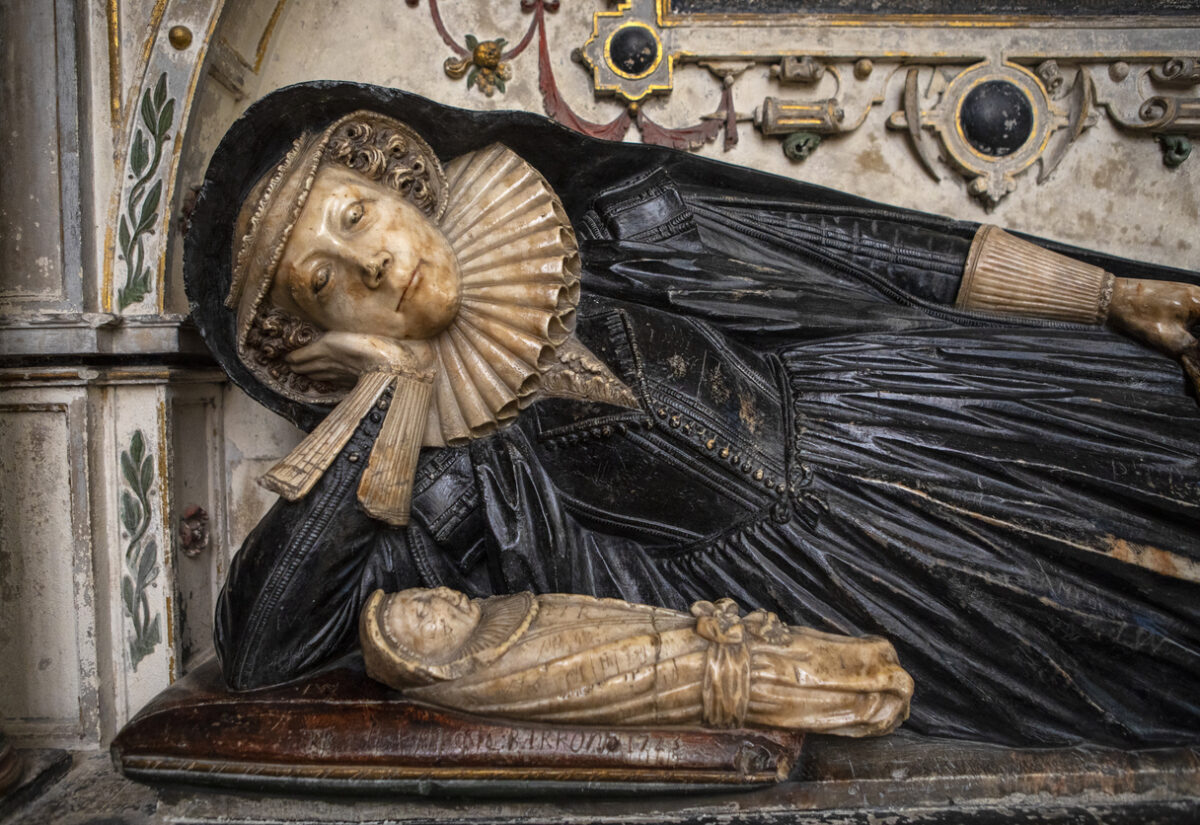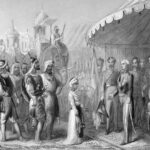 Getty Images
Getty ImagesLife in Tudor England was anything but easy. For all the cultural flourish and royal intrigue of the 16th century, the reality for most people was grim. Life expectancy hovered around 35 years, and survival was far from guaranteed. Whether you were a noble or a peasant, danger lurked everywhere, from the filth in your drinking water to the whims of the monarchy. Death was a constant presence, woven into the routines of daily life. Here are some of the most common (and unpleasant) ways you were likely to meet your end during the Tudor period.
Infectious diseases
Epidemics were part of everyday life, and there was little understanding of how disease actually spread. The sweating sickness, a mysterious and deadly illness unique to Tudor England, could kill in a matter of hours, striking without warning and baffling physicians of the time. There was no known cause, no treatment, and no pattern to predict who it would affect. It arrived in terrifying waves, decimating populations.
Other common killers included smallpox, measles, tuberculosis, and typhus. Each could sweep through crowded towns and villages with devastating speed, especially in an age where people lived in close quarters and basic hygiene was non-existent. Plague outbreaks, especially bubonic plague, were frequent and catastrophic, particularly in densely populated areas like London. There were no antibiotics, and most treatments ranged from useless to harmful. Quack remedies, herbal poultices, bloodletting, and prayer were the main recourse. Isolation was sporadically enforced but poorly understood. It wasn’t uncommon for entire households to die within days.
Poor sanitation and dirty water
The average Tudor household had no plumbing. Waste, both human and animal, was often dumped into open ditches or the street, and cesspits frequently overflowed. Even in towns, regulations on waste disposal were rarely followed, leading to widespread contamination of water supplies. Rivers and streams were used for both drinking water and the disposal of waste, making outbreaks of dysentery, cholera-like illnesses, and typhoid common.
Even in wealthier areas, the situation wasn’t much better. In many cases, water from the same source served multiple households, often shared with animals. Many people drank ale or weak beer because the brewing process killed off some of the bacteria found in water. Ale was safer, but relying on it could lead to dehydration and nutritional deficiencies if not balanced with other liquids. In short, just drinking water could be a gamble.
Childbirth
Giving birth in Tudor England was incredibly risky, both for the mother and the child. Without sterile instruments or a proper understanding of infection, complications like haemorrhaging, obstructed labour, or retained placenta could quickly turn deadly. Midwives, though experienced, lacked the tools or training to intervene when something went wrong beyond the most basic measures.
Puerperal fever, now known to be caused by bacterial infection, was a common killer, often the result of hands or cloths that had not been cleaned. Caesarean sections were rarely performed, and almost always fatal to the mother. There were no painkillers except for alcohol or herbal sedatives, and no surgical interventions that could reliably save a life. Many women died during or shortly after childbirth, and infant mortality was staggeringly high. For many families, losing children in infancy was a tragically common experience.
Malnutrition and famine
Tudor England’s food supply was precarious. A poor harvest could lead to food shortages within weeks, particularly among the lower classes who had little or no reserves. The rural poor depended on local crops, mainly grain, for survival, and bad weather, floods, or blight could destroy a year’s food supply.
When food became scarce, those with wealth hoarded supplies, and prices skyrocketed. The poor were left to eat what they could—stale bread, foraged greens, or spoiled meat. Malnutrition set in quickly, especially in the winter months. Scurvy, rickets, and other vitamin deficiencies were widespread. Starvation could also be the indirect cause of death, weakening the immune system and making people more vulnerable to disease.
Accidents and injuries
Tudor life involved hard physical work. Whether you were a farmer, a blacksmith, a sailor, or a servant, your daily routine was full of hazards. Accidents were common—falls from ladders, injuries from ploughs or blades, burns from open fires, and animal-related injuries were all part of the risk.
Even a seemingly minor injury could prove fatal. Without antiseptics or an understanding of bacteria, infected wounds often led to sepsis or gangrene. Amputation was a last resort and carried its own high risk of death. Doctors lacked surgical expertise, and there were no anaesthetics aside from alcohol or biting down on a stick. A broken leg or deep cut was not just painful—it could easily be a death sentence.
Execution
The Tudor period is infamous for its public executions, many of which were carried out with theatrical flair. If you were high-born and displeased the monarch, especially Henry VIII or Mary I, your head might end up on the chopping block. Political enemies, suspected heretics, and even former friends of the crown found themselves condemned to death.
Executions weren’t just punishments. They were public spectacles meant to instil fear and reinforce loyalty to the crown. Methods varied: beheading for the nobility (though not always cleanly done), hanging for commoners, and more gruesome options like being burned at the stake or hanged, drawn, and quartered for those convicted of treason. In some cases, executions were botched, adding prolonged suffering to an already grim fate.
War and rebellion
Although England wasn’t constantly at war during the Tudor period, conflict was never far away. Battles like Flodden in 1513 or internal uprisings like the Pilgrimage of Grace in 1536 claimed many lives. Military service was dangerous, not just because of battle but because of poor conditions in camps—lack of food, unsanitary conditions, and disease spread rapidly.
Rebellions and uprisings were met with swift and brutal retribution. Many rebels were executed en masse, their bodies displayed as warnings to others. Soldiers and conscripts alike faced both the perils of combat and the far greater threat of illness before they even reached the battlefield.
Fire
In a world of open flames, flammable building materials, and no organised firefighting service, fire posed a serious risk. Most homes were built of timber with thatched roofs, and heating, cooking, and lighting all relied on fire. Chimneys were rare in poorer homes, and hearths were often left unattended.
A single spark could wipe out an entire row of houses. Fire spread quickly in crowded towns, especially during dry seasons. There were no fire escapes, no emergency services, and little chance of putting out a blaze once it got going. Burn injuries were often fatal due to infection, and even survivors were likely to be left with serious scarring or disabilities.
Legal and religious persecution
Religious upheaval defined much of the Tudor era, with the Reformation and counter-Reformation swinging the country between Catholic and Protestant rule. If you practised the “wrong” religion under the wrong monarch, you could be fined, imprisoned, or executed.
People were encouraged to report neighbours who failed to attend church or were suspected of harbouring banned texts or priests. Trials were often unfair, and confessions obtained under torture were not uncommon. Even minor infractions could result in a death sentence if they were interpreted as disloyalty to the Crown or heresy against the established Church.
Living through the Tudor period meant constantly walking a tightrope between survival and sudden death.
Whether it was disease, childbirth, famine, fire, or the ever-shifting political and religious landscape, everyday life came with extraordinary risks. Medical knowledge was rudimentary, public health systems were non-existent, and the law could be as dangerous as illness. It’s no wonder the average lifespan was so short—simply making it to adulthood was a feat of endurance in itself. And if you were lucky enough to grow old, you had almost certainly seen more than your share of tragedy along the way.



